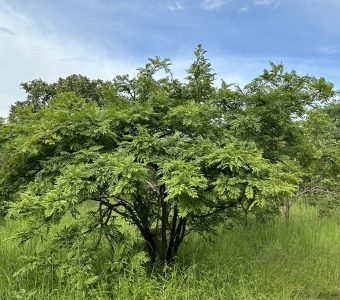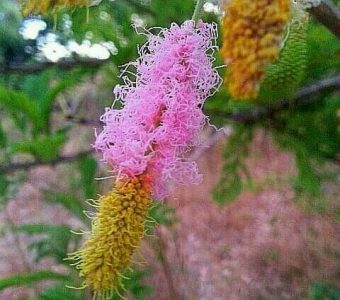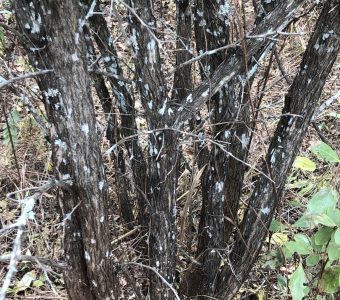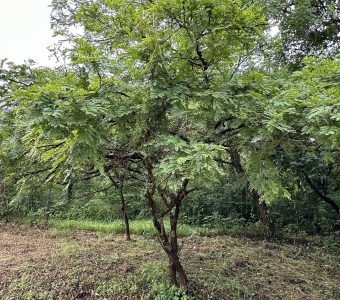



Botanical Name: Dichrostachys cinnerea
Common Name: Sickle Bush, Kansalosalo, Kaweyi, Mubanga, Muselesele, Katenge,
Plant Family: Fabaceae (Legume Family) Mimosoideae
Growth Form, Habitat and Distribution: An untidy, spiny semi-deciduous shrub or small tree , usually multi-stemmed with a feathery crown. Often forms thickets by suckering, usually on abandoned farm land. Occurs all over Zambia, usually at lower altitudes in Munga woodland, and in most woodland types and Baikiaea forest.
Size: Height up to 10m, usually smaller, spread 4 to 8m.
Bark: Grey-black, fissured, with marked anastomosing, vertical ridges.
Leaves: Compound, bipinnate, 8 to 20cm, with 6 to 19 pairs of pinnae, each with 8 to 40 opposite pairs of small (0.1 to 1.0cm), narrow, oblong-sickle-shaped, dark green leaflets closing up at midday. Petiole up to 2cm. Spines straight, grey.
Flowers: In axillary spikes (2 to 5cm), with sterile, pink spike above a short bright yellow fertile catkin. The flower hangs upside down, August to December but often later.
Fruit: Black-brown twisted pods (up to 10cm), constricted between seeds, in contorted clusters, ripening May to September, later falling to the ground with 4 to 6 flat, glossy-brown seeds.
Uses: Makes a good charcoal. The inner bark makes a good string and the roots are used for baskets. The leaves and roots used in traditional medicine.
